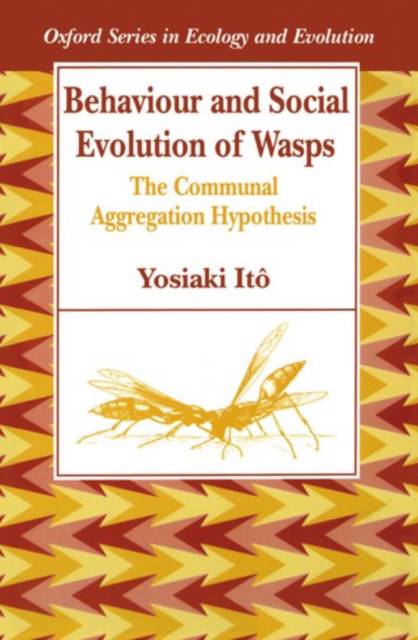
Bedankt voor het vertrouwen het afgelopen jaar! Om jou te bedanken bieden we GRATIS verzending (in België) aan op alles gedurende de hele maand januari.
- Afhalen na 1 uur in een winkel met voorraad
- Gratis thuislevering in België vanaf € 30
- Ruim aanbod met 7 miljoen producten
Bedankt voor het vertrouwen het afgelopen jaar! Om jou te bedanken bieden we GRATIS verzending (in België) aan op alles gedurende de hele maand januari.
- Afhalen na 1 uur in een winkel met voorraad
- Gratis thuislevering in België vanaf € 30
- Ruim aanbod met 7 miljoen producten
Zoeken
Behaviour and Social Evolution of Wasps
The Communal Aggregation Hypothesis
Yoshiaki Ito, Yosiaki Ito, Yosiaki It?
€ 46,95
+ 93 punten
Omschrijving
In this book, Itô presents data on tropical wasps which suggest that kin-selection has been overemphasized as an evolutionary explanation of sociality. He concentrates on the Vespidae (paper wasps and hornets), a group much discussed by evolutionary biologists because it exhibits all stages of social evolution: subsociality, primitive eusociality, and advanced eusociality. The author reports field observations by himself and others in Central America, Asia, and Australia, showing that multiple egg-layers in a nest are not uncommon. Because coexistence of many 'queens' leads to lower relatedness among colony members than in single-queen colonies, he suggests that kin-selection may not be the most powerful force determining observed social patterns. Instead, subsocial wasps may first have aggregated for defense purposes in habitats with a high risk of predation, with mutualistic associations among many queens. Through parental manipulation and then kin selection, differentiation into within-generation castes may have followed. Of interest to all students of ecology, evolution, and behavior, this book beautifully demonstrates the author's ability to combine wide-ranging data with thoughtful questions.
Specificaties
Betrokkenen
- Auteur(s):
- Uitgeverij:
Inhoud
- Aantal bladzijden:
- 168
- Taal:
- Engels
- Reeks:
Eigenschappen
- Productcode (EAN):
- 9780198540465
- Verschijningsdatum:
- 18/03/1993
- Uitvoering:
- Paperback
- Formaat:
- Trade paperback (VS)
- Afmetingen:
- 155 mm x 235 mm
- Gewicht:
- 471 g

Alleen bij Standaard Boekhandel
+ 93 punten op je klantenkaart van Standaard Boekhandel
Beoordelingen
We publiceren alleen reviews die voldoen aan de voorwaarden voor reviews. Bekijk onze voorwaarden voor reviews.









